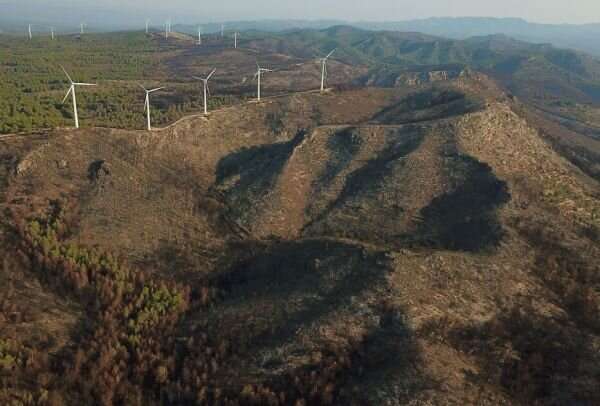Changes in fire activity are threatening more than 4,400 species globally

Changes in fire activity are putting at risk more than 4,400 species across the globe, says a new paper led by the University of Melbourne, involving 27 international researchers.
"Those species include 19 percent of birds, 16 percent of mammals, 17 percent of dragonflies and 19 percent of legumes that are classified as critically endangered, endangered or vulnerable," said lead author, Dr. Luke Kelly, a Senior Lecturer in Ecology and Centenary Research Fellow. "That's a massive number of plants and animals facing threats associated with fire."
The paper, "Fire and biodiversity in the Anthropocene," published in Science, found that the species categorized as threatened by an increase in fire frequency or intensity, include the orangutan in Indonesia and mallee emu-wren in Australia.
"Recent fires have burned ecosystems where wildfire has historically been rare or absent, from the tropical forests of Queensland, Southeast Asia and South America to the tundra of the Arctic Circle," Dr. Kelly said.
"Very large and severe fires have also been observed in areas with a long history of recurrent fire, and this is consistent with observations of longer fire seasons and predictions of increased wildfire activity in the forests and shrub lands of Australia, southern Europe and the western United States."
The research team also found a striking example from Australia: the total area burnt by bushfires in the eastern seaboard from August 2019 to March 2020, 12.6 million hectares, was unprecedented in scale.
However, some species and ecosystems are threatened when fire doesn't occur. Frequent fires, for example, are an important part of African savanna ecosystems and less fire activity can lead to shrub encroachment, which can displace wild herbivores such as wildebeest that prefer open areas.
"Understanding what's causing changes in different places helps us to find effective solutions that benefit people and nature," Dr. Kelly said.
Researchers, including 27 authors from a combined 25 institutions around the world (including six authors from the University of Melbourne), identified three main groups of human drivers as transforming fire activity and its impacts of biodiversity: global climate change, land-use and biotic invasions. This means that people and governments around the world need to act and confront the diverse changes to the environment that are occurring.
"It really is time for new, bolder conservation initiatives," Dr. Kelly said. "Emerging actions include large-scale habitat restoration, reintroductions of mammals that reduce fuels, creation of low-flammability green spaces and letting bushfires burn under the right conditions. The role of people is really important: Indigenous fire stewardship will enhance biodiversity and human well-being in many regions of the world."
Michael Clarke, Professor of Zoology at La Trobe University, who supported the study, echoed Dr. Kelly's call, saying "Our research highlights the magnitude of the challenge fire poses to animals, plants and people, given worsening climatic conditions—a conclusion echoed in the recent Royal Commission report into last summer's fires."
More information: Luke T. Kelly et al. Fire and biodiversity in the Anthropocene, Science (2020). DOI: 10.1126/science.abb0355
Journal information: Science
Provided by University of Melbourne




















